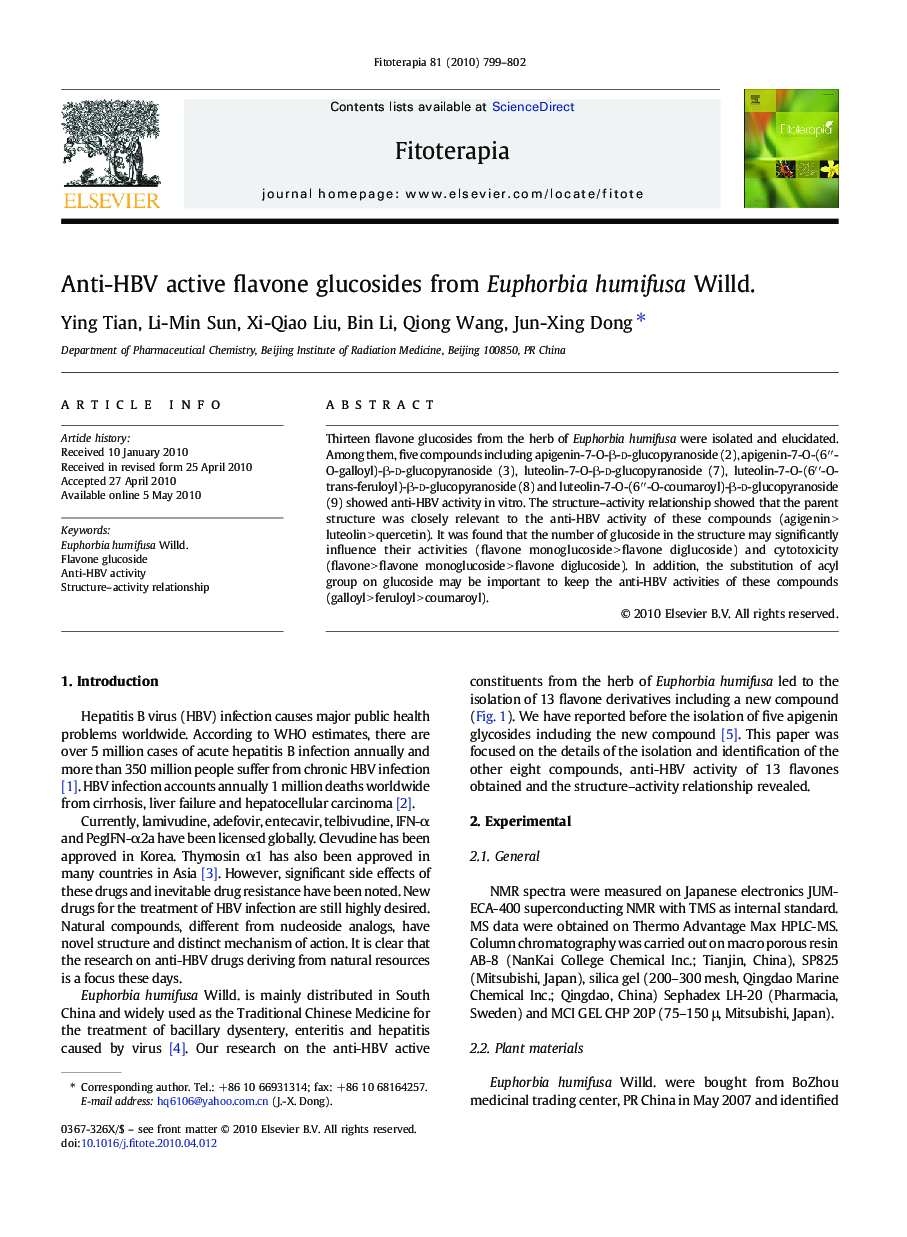| کد مقاله | کد نشریه | سال انتشار | مقاله انگلیسی | نسخه تمام متن |
|---|---|---|---|---|
| 2539167 | 1122167 | 2010 | 4 صفحه PDF | دانلود رایگان |

Thirteen flavone glucosides from the herb of Euphorbia humifusa were isolated and elucidated. Among them, five compounds including apigenin-7-O-β-d-glucopyranoside (2), apigenin-7-O-(6′′-O-galloyl)-β-d-glucopyranoside (3), luteolin-7-O-β-d-glucopyranoside (7), luteolin-7-O-(6′′-O-trans-feruloyl)-β-d-glucopyranoside (8) and luteolin-7-O-(6′′-O-coumaroyl)-β-d-glucopyranoside (9) showed anti-HBV activity in vitro. The structure–activity relationship showed that the parent structure was closely relevant to the anti-HBV activity of these compounds (agigenin > luteolin > quercetin). It was found that the number of glucoside in the structure may significantly influence their activities (flavone monoglucoside > flavone diglucoside) and cytotoxicity (flavone > flavone monoglucoside > flavone diglucoside). In addition, the substitution of acyl group on glucoside may be important to keep the anti-HBV activities of these compounds (galloyl > feruloyl > coumaroyl).
Anti-HBV constituents investigation on Euphorbia humifusa Willd. led to the isolation of thirteen flavone glucosides including five active compounds. The structure–activity relationship revealed the importance of parent structure, the number of glucoside and substituent group.Figure optionsDownload as PowerPoint slide
Journal: Fitoterapia - Volume 81, Issue 7, October 2010, Pages 799–802